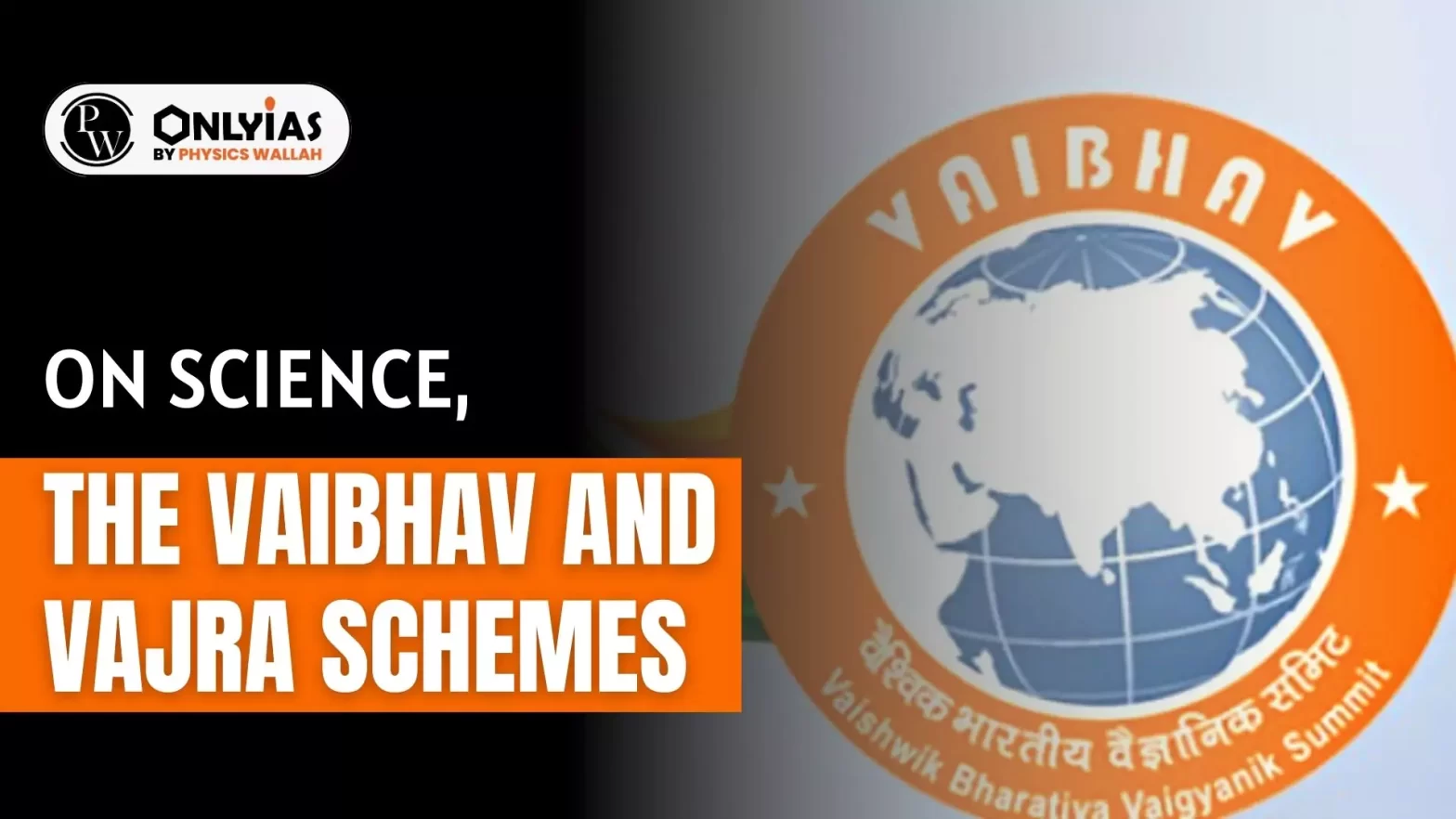Context:
This editorial is based on the news “Exchange of opportunity: on science, the Vaibhav and VAJRA schemes” which was published in the Hindu. Recently, the Ministry of Science and Technology announced the VAIBHAV (VAIshwik BHArtiya Vaigyanik) fellowship to 22 scientists of Indian origin to take up collaborative research projects in the fields of electrical engineering and computer science at IIT-Bombay and IIT-Kanpur, respectively, as “Distinguished VAIBHAV Fellows”.
| Relevancy for Prelims: Vaibhav Fellowship Scheme and VAJRA Scheme.
Relevancy for Mains: Role of Government Policies and Indian Diaspora for Science, Technology and its Development. |
About Vaibhav Fellowship Scheme:
- Eligibility: Scientists of Indian origin, or of Indian ancestry.
- Timeframe: These Scientists can apply to spend up to three months in a year, for three years, at a host research laboratory in India.
- Aim: In that period, these researchers are expected to begin a project or technology start-up, build long-term connections with the institute, collaborate with the host faculty and bring in new ideas to the field, in Indian university and research settings.
- Grants: Fellowship would include fellowship grant (INR 4,00,000 per month), international and domestic travel, accommodation and contingencies.
- Significance: Boosting of Knowledge for Transformation- The Indian origin faculty could be encouraged to take on students, more associates and even supervise degrees that could lead to a genuine transfer of knowledge, innovation and work culture and perhaps optimistically, the non-resident Indian scientist even considering staying on in India.
Earlier Such Related Initiatives & Significance
- VAJRA Scheme: Vaibhav is not an original idea. Earlier, the Department of Science and Technology (DST) conceived the VAJRA (Visiting Advanced Joint Research) Faculty Scheme with similar objectives.
- As per officials, currently, both schemes will continue.
- Significance: Short-term fellowships are useful in priming foreign faculty and researchers to the potential for science in India.
- They can also lay bare the challenges- the lack of funding for basic research, the lack of participation by private companies in core research and development and limits on academic freedom and trigger changes in policy.
Differences Between Vaibhav Fellowship Scheme and VAJRA Scheme
- Eligibility: Vaibhav is exclusively for the Indian diaspora, while VAJRA scheme can include other nationalities too.
- Timeframe and Grants: VAJRA, though generous in the amount offered as fellowships, was restricted to one-year engagements, unlike Vaibhav which pays less but extends to three years.
Challenges that Need to be Addressed
- On Effectiveness: The DST, which is in charge of both schemes, says that nearly 70 international faculty have spent time in India as part of VAJRA scheme, though there have been concerns over the effectiveness of the scheme.
- Clarity on Target: While facilitating exchange between Indian and foreign universities is welcome, there ought to be clarity on what India hopes to gain by specifically focusing on the Indian diaspora.
Conclusion
There is a vast pool of skilled scientific manpower, trained abroad, who can be brought back or retained in India, as observed due to the presence of the tremendous competition for tenured jobs in American and European universities. Taking such an initiative is a positive step in shifting towards more innovative ideas that will lead to socio-economic growth and prosperity.
![]() 26 Jan 2024
26 Jan 2024

